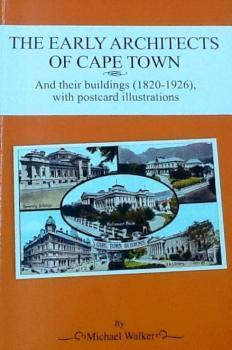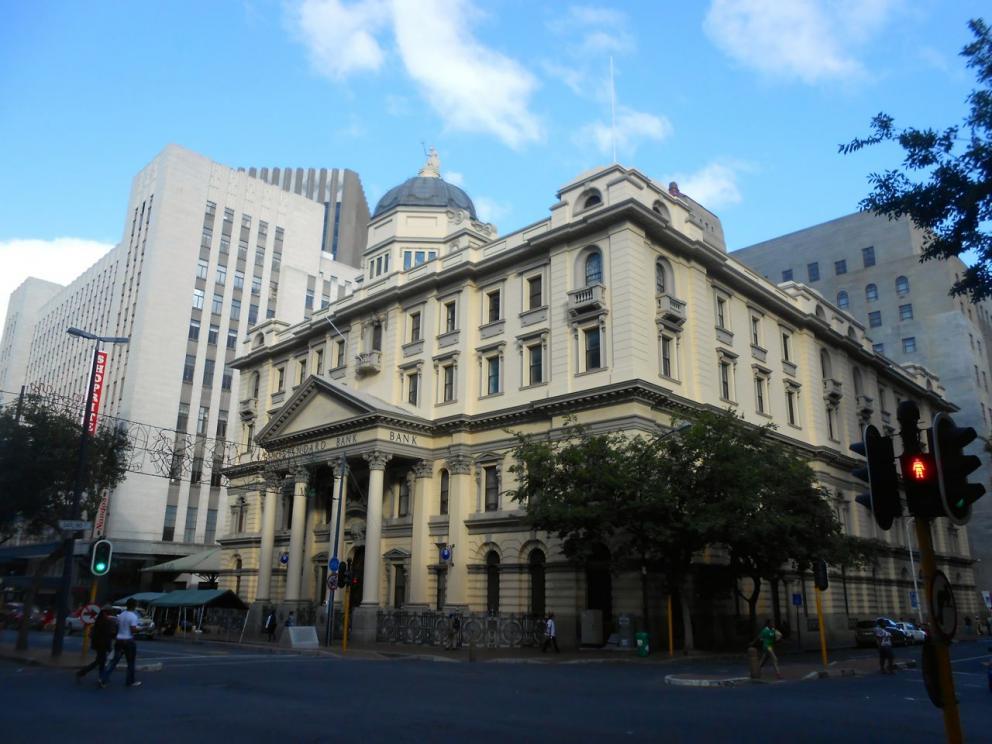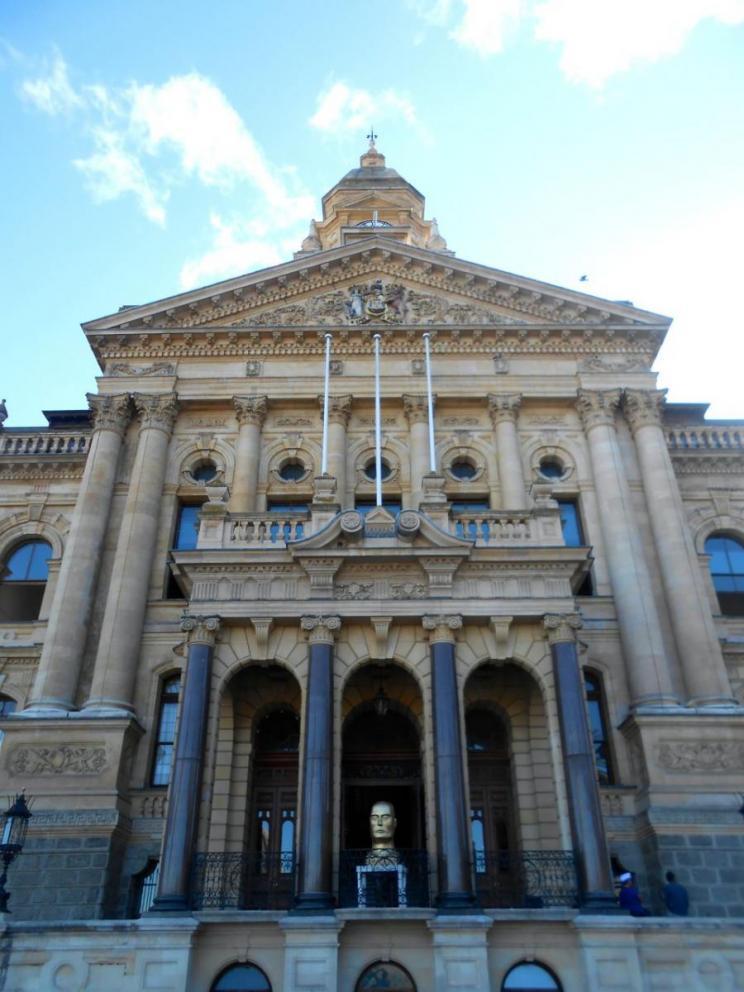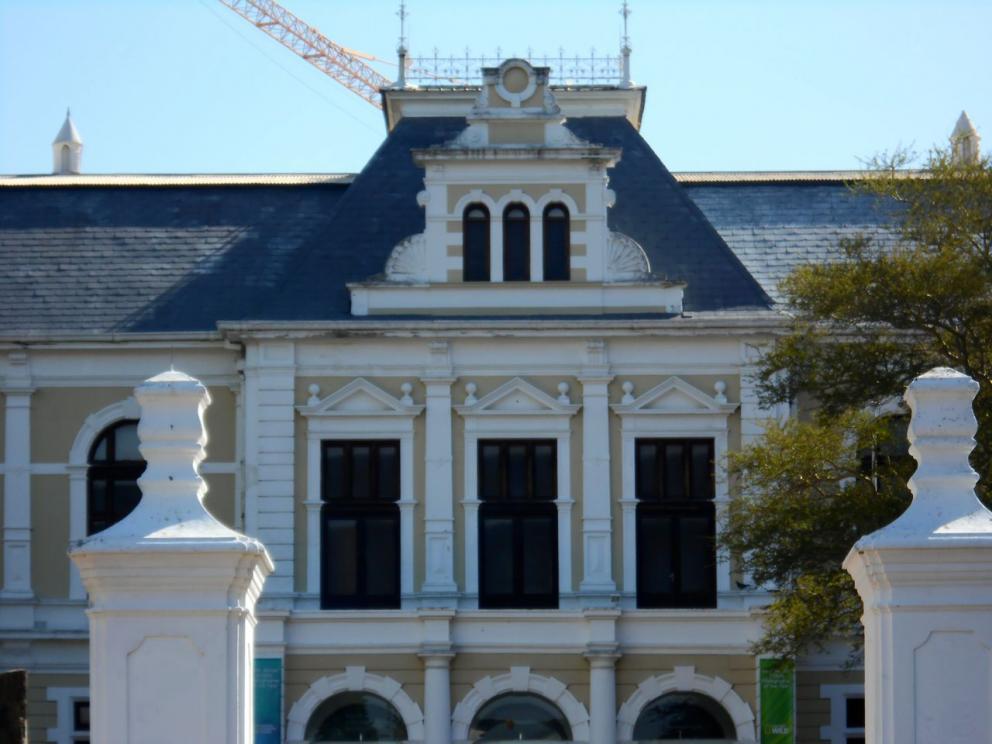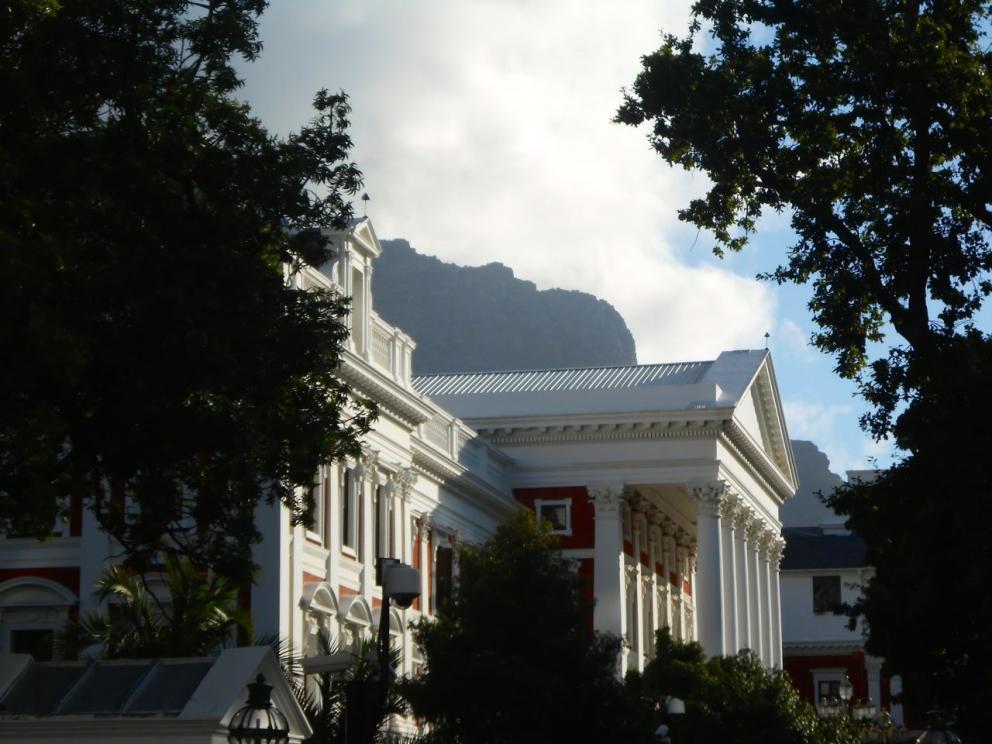
The Early Architects of Cape Town and their buildings (1820 – 1926) with postcard illustrations is a sizeable title for a small book (the main body of text is only 120 pages). It has been written and self published by Michael Walker (2012). The format is one of tracking down a number of important architects of Cape Town through their buildings as shown in souvenir vintage postcards. The principal focus of the book is on approximately 50 architects active in Cape town in the 19th and early 20th centuries. Small oval sepia photographs of 32 of the architects is an innovation and locating these images (from contemporary volumes of Who’s Who), is an impressive achievement. The design of the book and the many unusual postcards and the fact that so many old buildings have long since disappeared and been replaced by modern high rise blocks gives this small volume an almost vintage feel. The book is crammed with interesting quirky facts about old Cape Town. It is strongly recommended for collectors of Cape Town books and adds to the architectural history of the city and South Africa.
However the dating and arrangement of the material is not successful as there is some backtracking in dates and the date of a particular building is far more important than the date of birth of an architect, if one wants to gather a view of emerging styles and to assess the cohesion of the work in a specific decade, place or era. Highlighting the role of imported influences by architects who came to settle in Cape Town could work but the theme needs to follow a consistent story, for the 30 year period from 1880 to 1910 or even 1920.
The earliest architect presented here is Hermann Schutte (1761 - 1844) who designed the Green Point Lighthouse (lit in 1824); it is a remarkable building because it is still in operation today and was declared a national monument in 1973. The importance of overseas professional training in architecture and the ready absorption of British and European styles, idioms and architectural conventions is seen in the work of a number of early architects, many of whom were immigrants, such as John Skirrow (Government architect 1825 to 1846) and Henry Willey Reveley (architect of St Andrew’s Presbyterian Church, 1829). Three postcard illustrations of the Public Library of Cape Town (later the South African National Library ) designed by William Kohler and based on Baseri’s design for the Fitzwilliam Museum, Cambridge , underline the international flow of ideas about public classical architecture as early as the 1850s.
The 1870s phase of economic expansion saw rapid changes in the cityscape of Cape Town and saw a number of English immigrant architects arrive to work for bodies such as the Public Works Department, the Cape Government Railways or to develop their own practices. Walker covers his architects according to their date of arrival in the City but while those who worked for public bodies were immediately productive, the architects in private practice took time to establish their practices, win competitions and gain a reputation so that the completion of projects extended into the late 19th century. The Gothic Revival style was chosen by Charles Freeman for the landmark Metropolitan Wesleyan Methodist Church in Greenmarket Square, while Freeman’s Standard Bank building with a pedimented and colonnaded portico with a cupola above signaled financial stability. High Victorian prosperity translated into a functional buildings such as hotels, the second railway station, the Houses of Parliament, the Cape Town Docks’ Clock Tower, hospitals, a new post office, market halls, the City Hall, port offices, churches and commercial buildings. The well known architects of this era, in addition to Charles Freeman, with examples of their works, were Adolphus Ackerman (the second Railway Station - 1877), Henry Greaves (responsible for the final set of plans for the Houses of Parliament, completed 1885) and the Clock tower of the CT Docks - 1883), Adolph Howard (the Port Office on the North Pier at the Alfred Docks - 1904), Henry Austin Reid (the City Hall, opened in 1905), George Ransome (Sea Point Town Hall - 1896 & the Colonial and Mutual Building – 1886-87), Edward Simpkin (a new Fish Market 1898 and the Harbour Board Office building - 1900 ), George Alexander (the Opera House, 1893) and Anthony de Witt (J.W. Jagger & Company Store and warehouse, 1892). Cape Town owed a considerable debt to this group of prolific and energetic architects.
Standard Bank Adderley Street (The Heritage Portal)
Cape Town City Hall (The Heritage Portal)
Another unanswered question is around the relationship of architects who worked for government and public authorities and those who practiced on their own account and how easily an architect could make a transition from one role to the other.
The pattern of immigration and a international flow of architectural ideas continued into the next decades with successful practices being established by Charles Smith, Johannes Vixseboxse, Frederick Cherry, William Adamson, Thomas Hitchin, William Black, Thomas Sladdin and Norris Cowin. Often projects reflected Cape Town’s seaside and harbour character and covered swimming pools and pavilion at Camps Bay (1903, Charles Smith), Sea Points bathing pavilion (c. 1913/1914-Frederick Cherry), a Promenade Pier (1911, William Adamson plus other architects). Johannes Vixseboxse was a Dutch architect who established himself in Pretoria and the Orange Free State in the late 1880s and with Dirk Wentink, won the competition for the design of the National History Museum later the South African Museum) and so brought South African Republican influence to Cape Town.
South African Museum (The Heritage Portal)
A key chapter in the book is devoted to the important architectural partnerships of the late 19th and early 20th centuries. By 1904, the tallest building in Cape Town was the B.H. Parker’s building (9 floors, corner of Strand and Burg Streets) which was the work of Tully and Waters, utilizing a steel framework imported from New York. The Parker and Forsyth partnership were the architects for Rustenburg Girls School in Rondebosch and this partnership was productive of work for churches, schools, commercial buildings, the Garlick’s Department store, hotels, the Tivoli Theatre, the Great Synagogue in Harrington Street, Gardens, and Hotel Majestic in Kalk Bay. Parker was clearly a versatile architect.
The work of Baker and his successive partnerships has not been neglected. Walker covers Baker’s remodelling and rebuilding of Groote Schuur (1894 – 1896), the restoration of the Summerhouse and the Woolsack, the St Michael and All Angels Church in Observatory and the 1901 St George’s Cathedral. Baker’s design for the Rhodes Building in 1900, the Cape Town offices of De Beers, reflected a confident mixing of Cape Dutch revival style with Arts and Crafts detail. Here Walker could profitably have used the relevant chapters in the important monograph on Baker architecture by Michael Keath (Herbert Baker Architecture and Idealism 1892-1913, the South African Years , Ashanti publishing,1992). Walker relies heavily on Doreen Greig’s book on Baker (Herbert Baker in South Africa, 1970) however he draws out the role of successive Cape Town collaborations. Francis Edward Masey was Baker’s partner in CT after 1899 and, after Baker had left for the Transvaal, tt was Masey who completed the Rhodes seaside home at Muizenberg, Rust-en-Vrede (1902). The Masey-Baker partnership lasted for a decade. By 1906 Franklin Kendall had joined the partnership as a senior partner and after 1910 Kendall was in the CT office on his own. Later James Morris was a partner of Baker and Kendall and post 1919 Kendall and Morris continued in partnership until 1925. Kendall was considered to be the successor to Baker’s practice and the style that was associated with Baker’s name.
A chapter titled, "South African born architects" (born in the period 1863-1889) who lived and worked in the city, introduces the reader to the Cape Town legacy of Ernst Seeliger, Herbert Jones, William Delbridge, Douglas Hoets, Joseph Solomon and Fred Glennie. The examples of the oeuvre of these professionals date from after the turn of the century, and some reflection on what made these South African born architects different from their overseas counterparts would have been worth probing. How did their education and training differ? There is some overlap with the Muizenberg / St James / Kalk Bay material presented in A Statement in Stone but the addition of Simonstown’s churches expands the reach.
Then there were two immigrant English architects who practiced in Cape Town after 1902, namely W H Grant and John Perry. Grant designed the third Muizenberg Pavilion, opened in 1929 and which lasted until 1968. Grant was also responsible for the then new Cape Argus building of 1922. Walker concentrates on Perry’s work in St James, but again there is some repetition of earlier writing from the Statement in Stone volume.
The final chapter on Church Square architecture between 1890 and 1910 leaves the reader with a hanging two pages and would have been better integrated into the coverage of the prominent Cape Town architects. The book lacks a conclusion about meaning and cohesion, but the addendum of lists of demolished buildings, builders, postcard publishers and an index of buildings adds value.
This book is likely to sell out quickly as it will be popular on the Cape Town book scene and in architectural circles.
Kathy Munro is an Honorary Associate Professor in the School of Architecture and Planning at the University of the Witwatersrand. She enjoyed a long career as an academic and in management at Wits University. She trained as an economic historian. She is an enthusiastic book person and has built her own somewhat eclectic book collection over 40 years. Her interests cover Africana, Johannesburg history, history, art history, travel, business and banking histories. She researches and writes on historical architecture and heritage matters. She is a member of the Board of the Johannesburg Heritage Foundation and is a docent at the Wits Arts Museum. She is currently working on a couple of projects on Johannesburg architects and is researching South African architects, war cemeteries and memorials. Kathy is a member of the online book community the Library thing and recommends this cataloging website and worldwide network as a book lover's haven.

